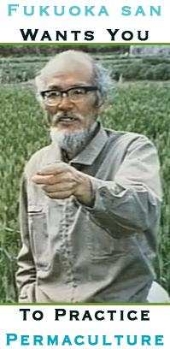Well, as far as a permaculture project goes, knock yourselves out. We need every bit of help we can get.
However, I disagree with the necessity of such a project and genuinely feel that the effort and finances would be better spent doing something else, since all of the permaculture information is already widely distributed, all of it is completely free for the reading, and the only restrictions placed on the word "permaculture" are that it can't be used in academic or other research work without attending a PDC and you must be certified in order to teach it. I agree whole-heartedly with both of those restrictions. Mollison and Holmgren invented the discipline and should be able to do whatever they want to ensure that people aren't misrepresenting it. If I don't like that, I can just turn the other cheek. The Australians seem to be doing just that with regard to many uses of their word in describing things that they had never intended. Formally, permaculture is closed-source, but in practice it's "free as in freedom".
If people think the information is "guarded", they are just mistaken, as Tyler points out. I'm not sure where that belief originated or if it persists, but it's flat wrong. If people desperately want to use the word permaculture to ride its coat tails toward recognition for whatever project they're working on, then let them be certified. If they can't afford to be certified, then they can just do their own thing and call it permaculture. In the unlikely event that the project gets tagged by the permaculture police for misuse of the term, then just come up with another term.
I'm still foggy on the purpose of this Open Source Permaculture project. Chris, you said that they want to work with Appropedia rather than create a new wiki, but they're creating a new site anyway. I'll re-iterate that Permaculture Media Blog is already fantastic as a permaculture resource. I stand by my statement that we need all the help we can get, but it's confusing when people already have two great resources up and running, and then they choose to delve into a third for no other apparent reason than a fundraiser and a book launch. If poor people already know about Appropedia, then just flesh that out. Splintering resources into all these different areas in the name of an ideal that's best applied to software and other intellectual property isn't really helping the cause, but if the spirit moves someone, then I guess they need to move.
I apologize if that comes across as overly cynical, but it's what I think.






